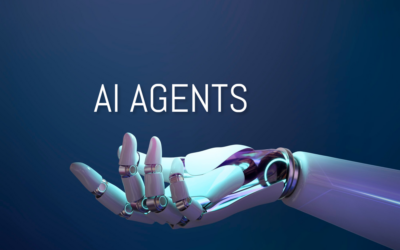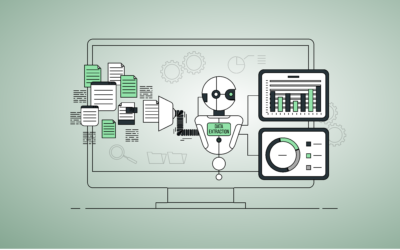Table Of Content
Machine learning, a subfield of AI, has become a crucial component of developing tools and applications for data analysis and decision-making in the digital age.
Businesses with the right systems in place can manage complex real data, information, and interactions at scale, enabling them to build learning algorithms and develop a competitive advantage. Machine learning makes sense of available data and assists in the development of better products for specific users.
Not all algorithms are the same, but most are built on the same ideas —the aim to discover knowledge from data and solve complex problems. Although machine learning involves significant mathematical computations, the essential part of the process is the business analyst’s ability to envision a conceptual solution to a problem…in other words, the ability to identify and understand business parts (like a puzzle) in order to assemble a unique machine learning model.
The business analyst’s understanding of data and analytics is critical as companies seek to gain perspective on machine learning and develop successful data projects.
What is Machine Learning (ML)?
Machine Learning is teaching computers to learn.
Machine learning is a technology that builds models to predict an outcome from data and experience. This is accomplished by combining logical operations and a sequence of instructions to the computer for a specific intended function.
Machine learning automates the collection of data and information that is turned into knowledge for predicting outcomes. Learning algorithms learn from themselves and can build algorithms on top of themselves (Deep Learning). ML is about statistical inference and training data models used to achieve Artificial Intelligence (AI).
Machine Learning Types
The framing of ML problems depends on specific use cases and prediction tasks.
1. Supervised Learning
A supervised learning algorithm is a method that creates models that combine inputs (features and variables) from multiple data points to predict (label) a value and find a solution, even for unseen data. The model defines the relationship between the inputs and the expected outcome, trains (learns) the model from patterns, and makes inferences (predictions) of outcomes on new variables.
Inputs are classified and labeled with categories, thus, supervising the training. Then, the system extrapolates responses, suggesting ways the computer will act in situations not present in the training set. The model examines examples (training sets) and minimizes losses by balancing the weight and bias.
Supervised learning algorithms can become complex with many dimensions and predictor functions.
Types of supervised learning algorithms:
- Neural networks:
- Perceptron
- Back propagation
- Structured output
- Association rule learning
- Classification:
- Random forest mode
- Support vector machines
- Naïve Bayes
- K-nearest neighbors (kNN)
- Regression:
- Linear regression
- Logistics regression
- Decision trees
2. Unsupervised Learning
Unsupervised learning algorithms work by finding a structure (patterns and correlations) hidden in unlabeled data sets. There is no learning model in this case, and the algorithm develops hypotheses and makes inferences, creating its own rules. It is common for algorithms to cluster related data with similar properties, and that becomes the input.
Types of supervised learning algorithms:
- Clustering algorithms
- K-Means clustering
- Hierarchical clustering
- DBSCAN clustering
- Dimensionality reduction
- Principal Component Analysis (PCA)
3. Reinforcement Learning (RL).
Reinforcement learning is a technique that sets up a model (called an agent) that is trained (learns) using rewards as signals for certain behavior, actions, or experiences, looking to maximize the rewards and reinforce the model.
RL is focused on learning from interaction, with trial and error, rewarding or punishing features that capture the aspects of the problem facing the agent and lead to achieving a goal. The agent must learn from its own experience, not relying on example—balancing exploitation from past experiences and exploration for future experiences.
Reinforcement learning problems usually involve interaction between an agent and an uncertain environment, using experience to improve performance.
Types of reinforced learning algorithms:
- Q learning algorithm
- SARSA (State-Action-Reward-State-Action)
- DDPG (Deep Deterministic Policy Gradient)
- Deep Q-Networks
Deep Learning (Deep Learning Algorithms). Deep learning algorithms are a subfield of machine learning that requires larger data sets, takes a longer time to train, lowers the need for human intervention, and trains on graphic cards (GPUs). Deep learning algorithms can analyze data through supervised or unsupervised learning, using a layered structure of algorithms called artificial neural network (ANN), similar to the human brain, leading to a more advanced process than regular machine learning algorithms.
A neural network with more than three layers is considered a deep learning algorithm. Deep inside the network, some layers are hidden in the training set.
Why Embrace Machine Learning?
Data has become a strategic asset that keeps raising the competitive standard by delivering value and transforming businesses. Many companies are investing in building predictive models to outcompete their competitors.
Learning algorithms can help businesses scale operations and learn about their customers. It becomes easier for customers to find products, as algorithms determine the choices that match their needs. But for a company to have a successful learning algorithm, it should have a good learning model that is continuously improving by refining its rules.
Building ML Models
ML teams must align culture and practices to integrate the development and operations of ML systems. The elements of an ML system are extensive and complex, and customers often benefit from a machine learning consulting firm that understands the differences between other software systems and can set up an MLOps environment, that is, apply DevOps principles to the ML production. Also, consultants will have the expertise to deal with the complexities related to the level of automation of the steps and maturity of the process to deliver the ML model to production.
An ML system must be implemented in a production environment that deploys an ML pipeline and automates new models’ retraining. Long-term system quality and innovation rate might depend on certain activities that increase the risk of technical-debt-related issues.
Consultants are especially careful about maintenance costs while adding improvements to the system and reducing bugs and vulnerabilities. Without a consultant, many attempted shortcuts and workarounds can induce technical debt related to configuration, data dependencies, monitoring, workflow pipelines, refactoring, etc.
Building a Machine Learning Strategy
Machine learning drives innovation and transforms information that businesses already have; thus, ML should be set up for scalability, elasticity, and operationalization.
Preparing Data Sets
Accessing and preparing company data is the first consideration when beginning the ML process, as data is the fuel for machine learning systems. Building a training set and an ML pipeline requires the discovery of data signals and patterns, in order to determine an objective and perform analysis. Gathering data from multiple sources and combining it into a data warehouse is recommended, integrating it using the ETL (Extract, Load, Transform) approach to improve performance.
Building Datasets
Data is used to build training models and, thus, must be captured in the same contexts and scenarios in which the model will be predicting, all while using the actual use case and considering a diversity of training data. Data must be from the same data distribution, representative of reality and of how the model will see it during prediction.
Building and Training ML Models
Models are continuously updated as patterns and signals change; therefore, finding the right variables to adjust the data that governs the training process is very important. Then, sending the model into production and maintenance is an ongoing streaming job. ML systems run training applications in the cloud that provide the dependencies to train learning models using frameworks or custom containers.
Validating Models
Validating and tuning model performance is established as an ongoing maintenance job. There must be a process in place to ensure that data and model work well together and that the model is not overfitting or underfitting with the data. The model is tuned by setting parameters, called hyperparameters, that run the algorithm and check the optimal functioning and control of its learning process. Tuning is performed with different hyperparameters to compare performance and make adjustments to find the most accurate model.
Management and Monitoring
Creating a model and putting it in production requires expertise and experience. ML consultants start by using existing models, then customize them for particular datasets, implement raw modeling techniques, validate performance, fix problems, and avoid data overfitting and prediction issues.
Deploying Models
Developing a model requires developer experience with Python and knowledge of TensorFlow, Scikit-learns, Keras API, and other deep learning tools. In addition, the development process involves numerous decisions about training and production, building workflows in the cloud vs. on-premises, and choosing managed services vs. custom services for running training jobs.
Cloud Machine Learning
Deep learning models usually consume large amounts of computing power due to their large number of training datasets. Therefore, it is recommended to start by using a cloud AI platform, a pay-as-you-go service which provides a low-cost platform for developing training and prediction models. These services allow for deploying the model in the cloud; in addition, they take care of provisioning and automatically scale up or down depending on peaks of demands.
Managed prediction services such as AutoML enable teams with limited expertise to train high-quality models. A machine learning consulting firm can provide expertise and a faster road to developing ML systems.
TensorFlow
This is an open-source machine learning tool with a readily available library to help businesses start using their own data sets and applications. Businesses of any size can get started without having to develop advanced algorithms or math models. In addition, TensorFlow can help streamline and scale ML workflows.
Python
Python is the most powerful programming language for data science. It is an object-oriented language which is easy to read, and it is supported by large standard libraries and frameworks for machine learning. Python runs anywhere and can be embedded into many applications. A very intuitive language, it is especially helpful in the process of building models.
Machine Learning Return on Investment (ROI)
1. ML Systems Maintenance Costs.
The evaluation of systems-level maintenance issues specific to the long-term costs of ML systems (technical debt) are of primary importance to ML consultants. Businesses save money by keeping a flexible and portable
2. Compute Resource Allocation.
Machine learning systems require expertise to manage resources and technical complexity. In developing an ML system, it’s a good practice to ensure visibility and transparency during the process, in order to avoid overspending in infrastructure, development, and resources, as well as to improve computer utilization and scaling plans.
3. Data Science Teams.
Enterprises must employ dedicated data science teams focused on managing data science tasks and obtaining useful outputs. Teams set up data monitoring and visualization tools so they can see the models in production, evaluating capacity, allocation, and utilization, to help make decisions about workflows and infrastructure.
4. Workflow Integration.
Integrating and streamlining machine learning operations (MLOps) with data science workflows and teams is necessary in order to optimize costs and avoid siloes. In addition, automating the ML lifecycle allows data scientists to better focus on delivering high impact ML models.












